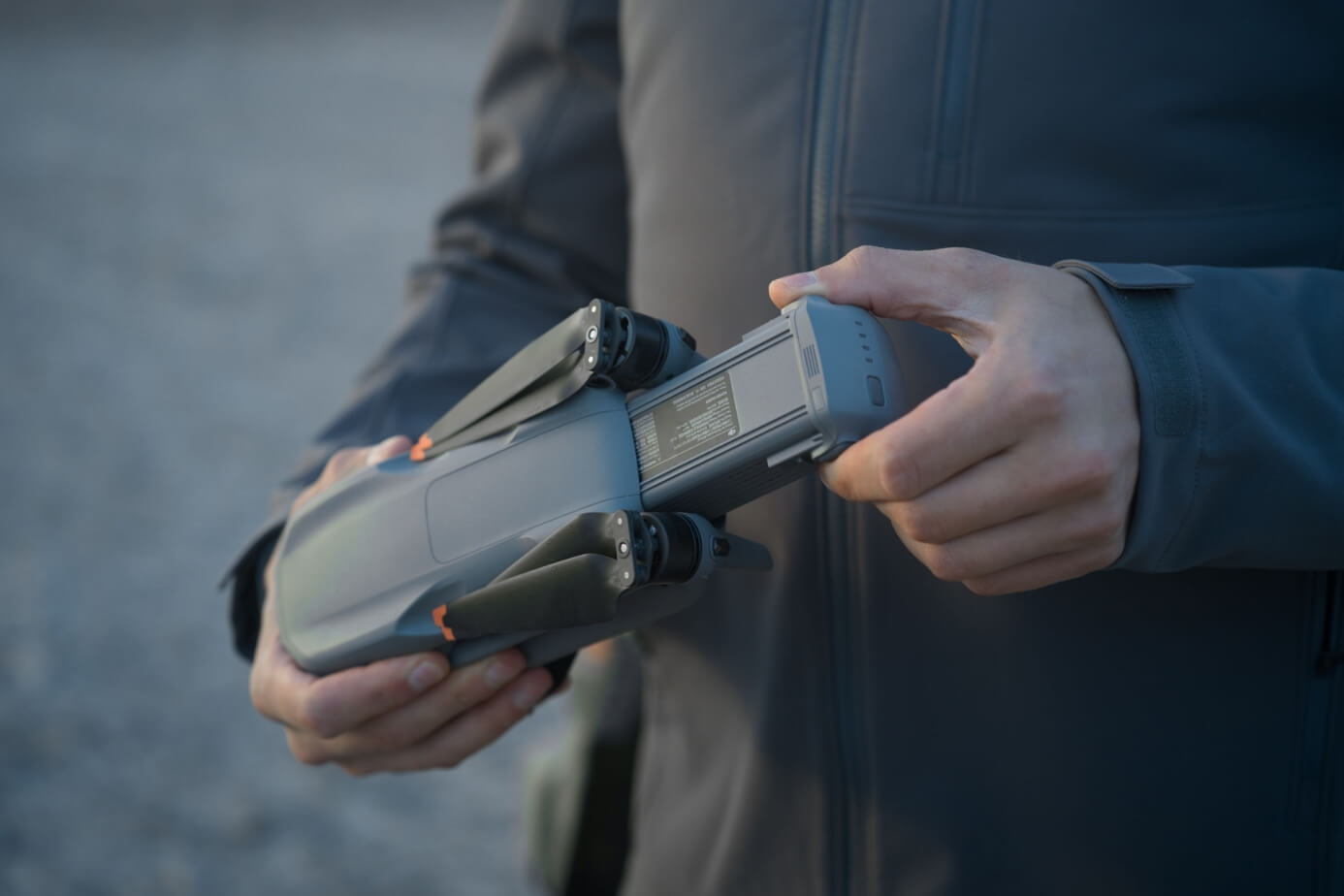
SkyDuo Pro – Dual Cameras. Unmatched Imagery.
Sale ending in
13 08



A dual-camera drone designed for travel photography, SkyDuo Pro integrates a suite of advanced technologies. Featuring a 1-inch-CMOS primary camera and a 70mm medium tele camera, each with up to 14 stops of dynamic range, [1] Air 3S captures landscapes, portraits, and more in stunning detail. Both cameras support the new Free panorama feature, which allows flexible shooting-range selections. Additional new highlights include nightscape obstacle sensing [2]and next-gen Smart RTH for enhanced safety during nighttime photography. In each and every way, SkyDuo Pro is designed to maximize every aerial moment.
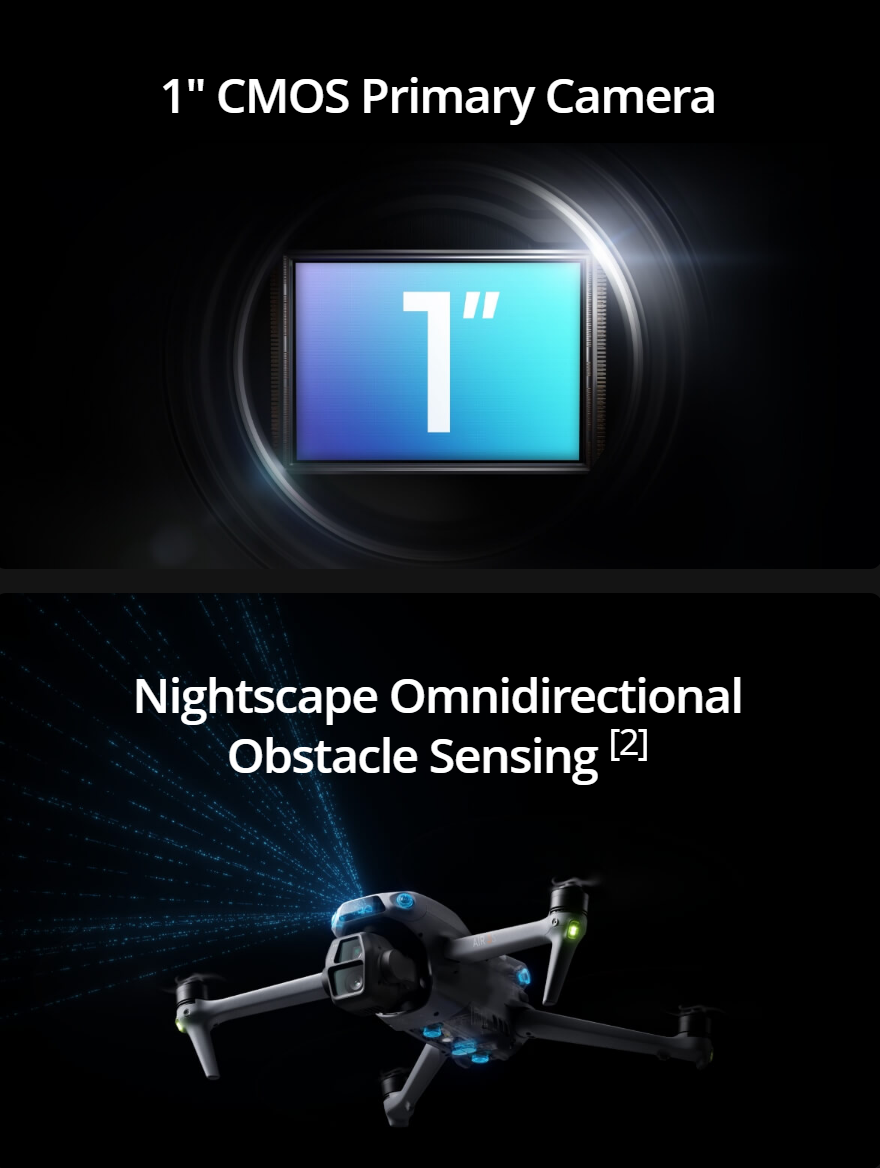
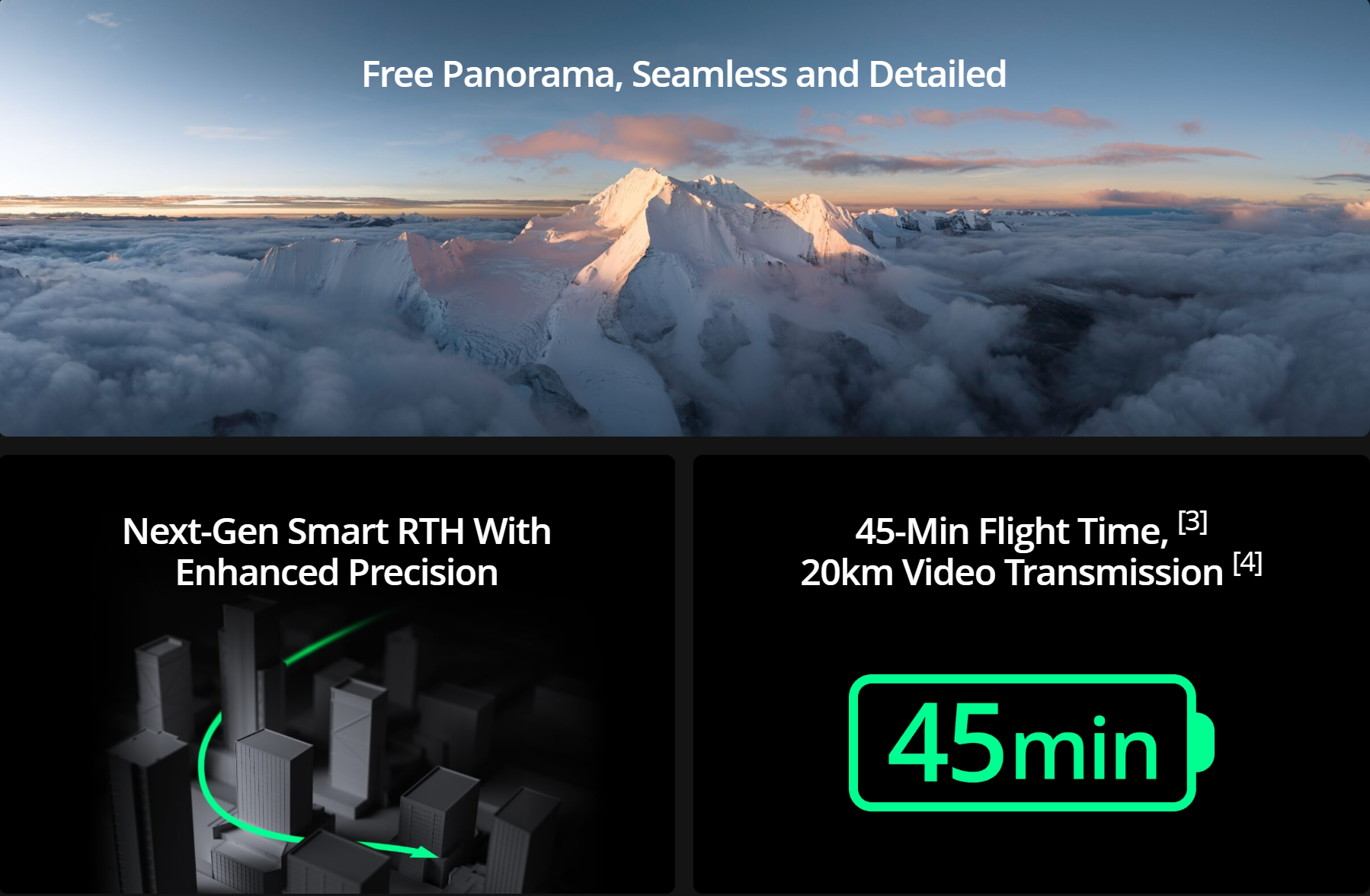
SkyDuo Pro features a dual-camera system consisting of a 1-inch-CMOS primary camera and a 1/1.3-inch-CMOS medium tele camera. The primary camera features a larger CMOS sensor and a 24mm lens, making it ideal for capturing expansive landscapes with enhanced clarity and a wide field of view. The 70mm medium tele camera excels at portrait and vehicle shots, offering compressed depth of field to highlight any subject with a bolder, more cinematic look.
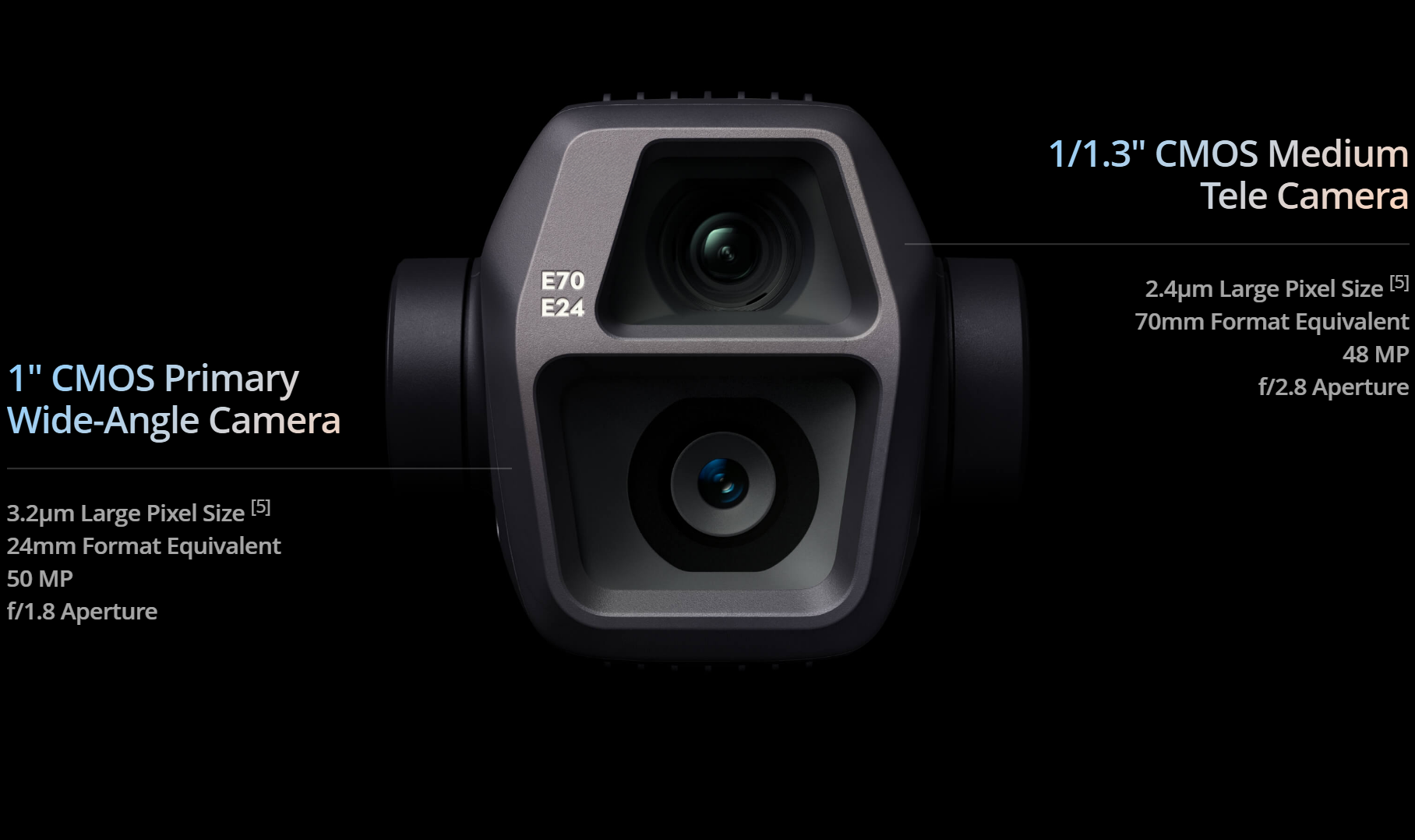
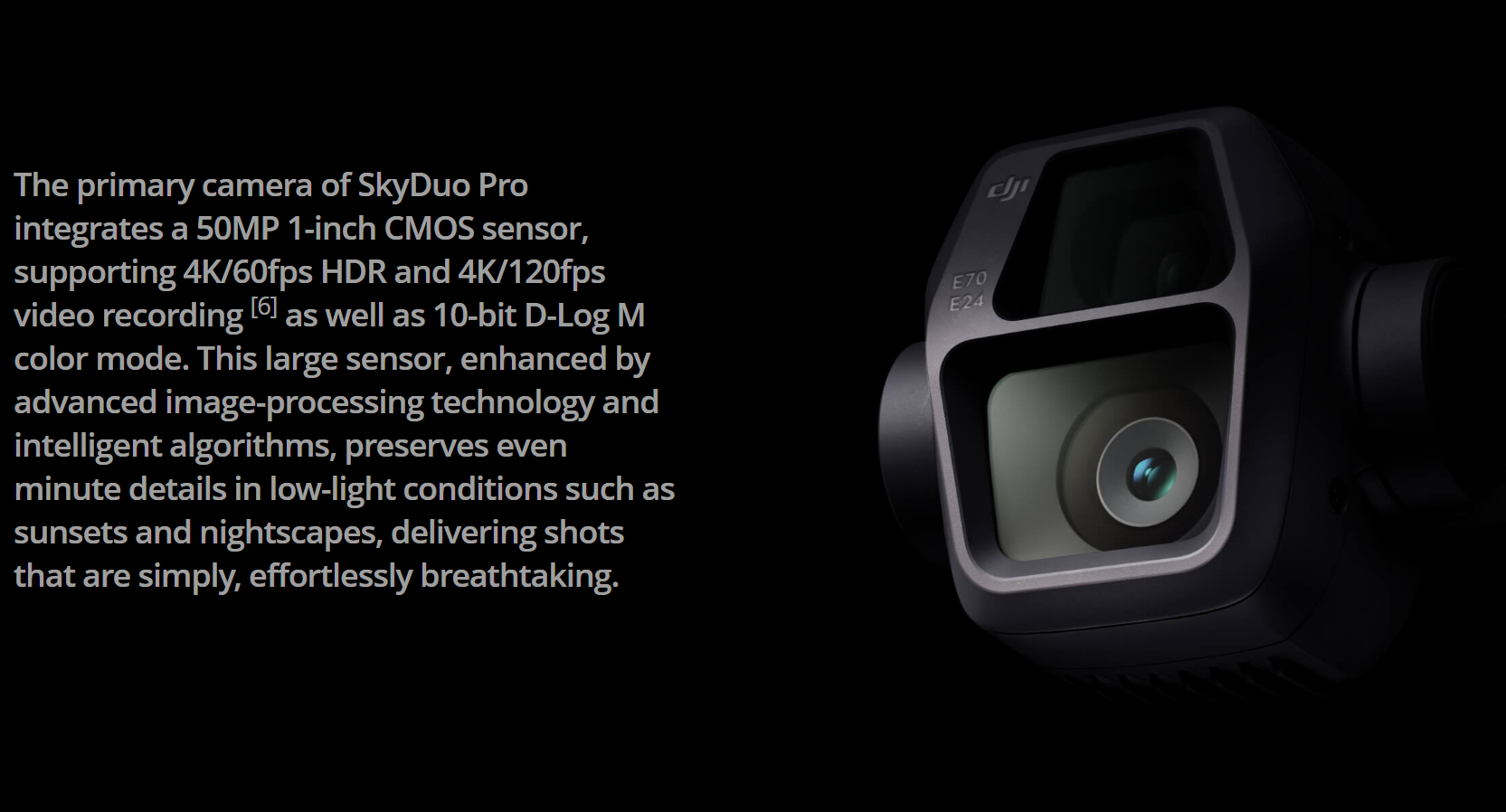
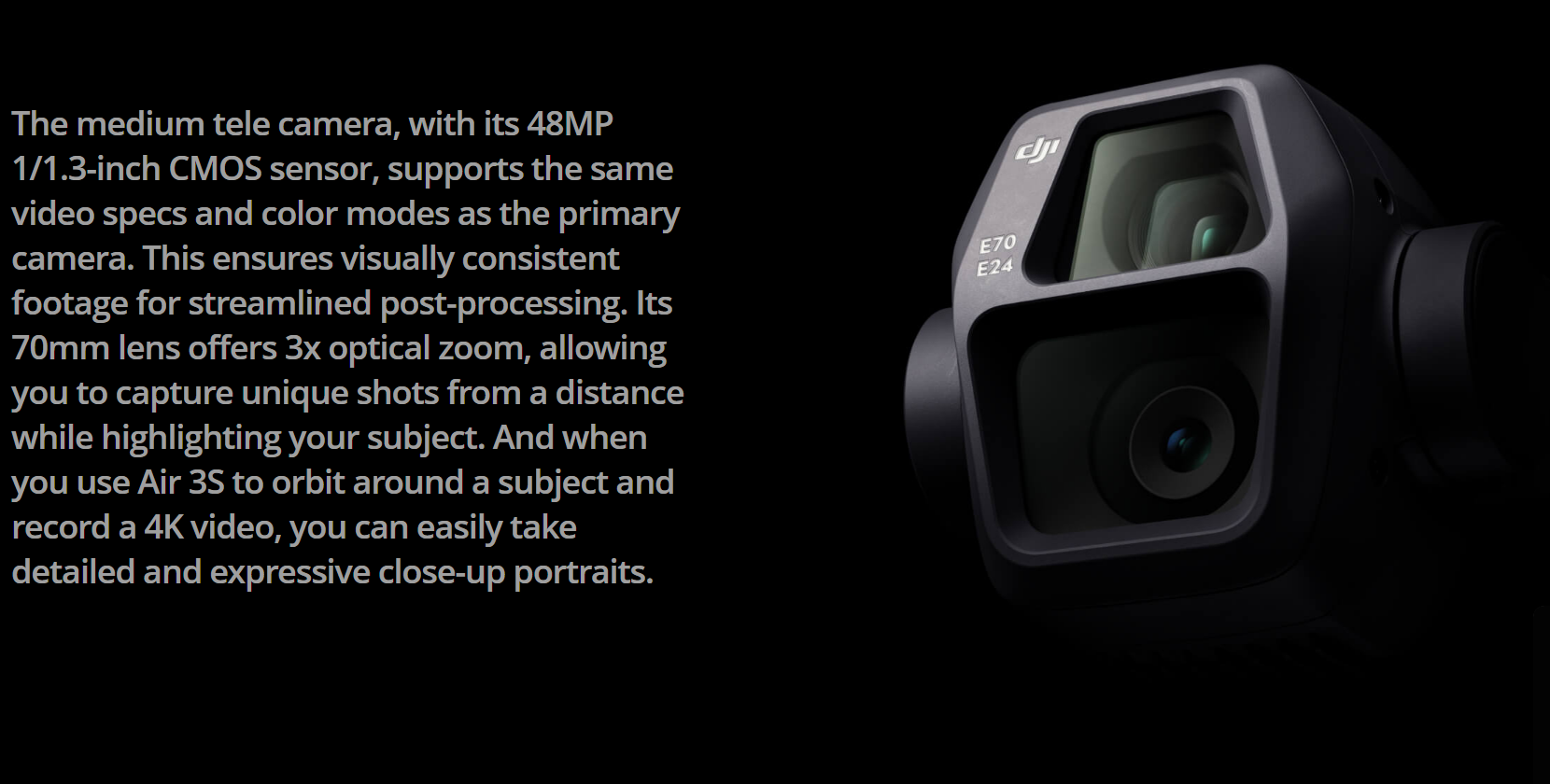
Both the primary camera and medium tele camera of SkyDuo Pro offer Free panorama mode, letting you create seamless panoramic shots by stitching together multiple images with a manually selected subject or area. The wide-angle camera offers a broader FOV, boosting efficiency when capturing panorama photos. The medium tele camera significantly reduces image distortion, crafting your masterpieces into expansive shots with a wide perspective from multiple photos and rich details captured through its focal length advantages.
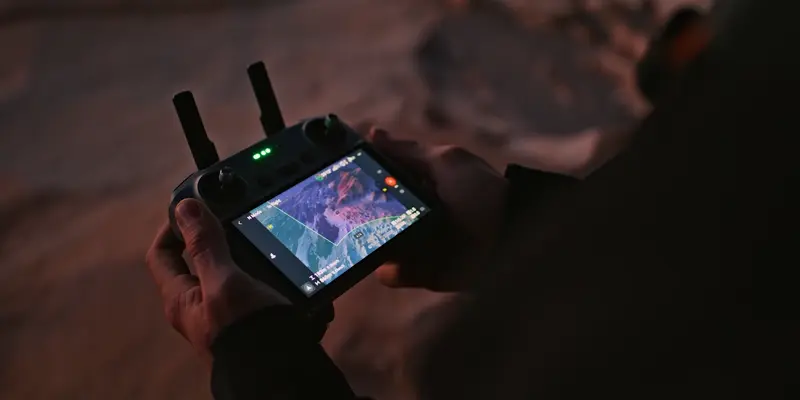
Compared with the previous-generation SkyDuo Pro, SkyDuo Pro employs a more advanced video encoding compression algorithm that reduces video file sizes by over 30% without compromising image quality, saving valuable storage space for creators.
SkyDuo Pro also supports user-favorite features like 2.7K vertical shooting, MasterShots, QuickShots, Hyperlapse, and more, putting a massive creative toolkit together in one compact drone.
SkyDuo Pro supports the Advanced Pilot Assistance Systems (APAS). Additionally, as the first DJI drone to feature forward-facing LiDAR, Air 3S also features a downward infrared time-of-flight (ToF) sensor and six vision sensors (two at the front, rear, and bottom) to achieve nightscape omnidirectional obstacle sensing. [2] This feature enables the drone to automatically identify and circumvent obstacles, such as buildings, during its flight and return paths, ensuring robust safety for nighttime photography.
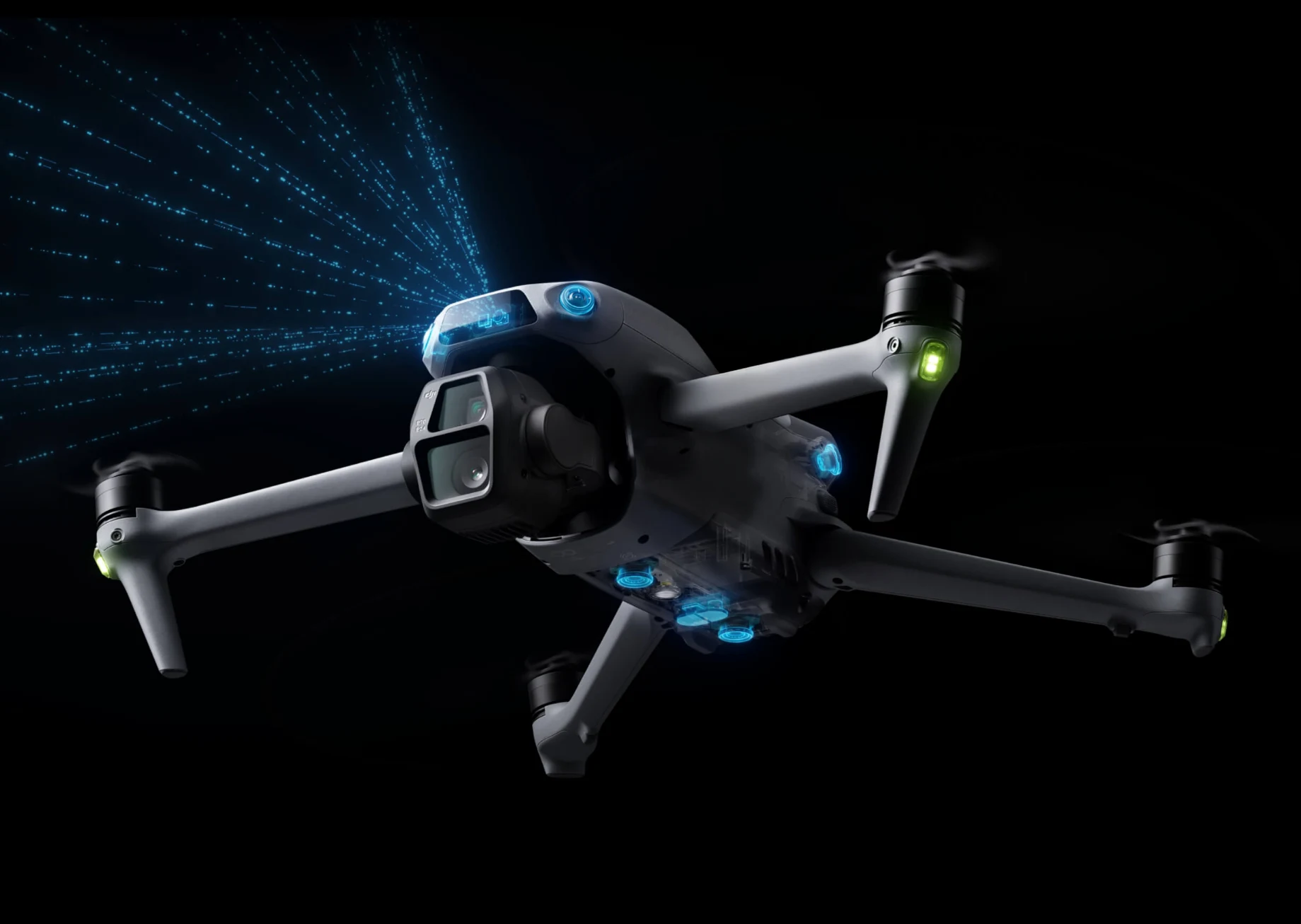

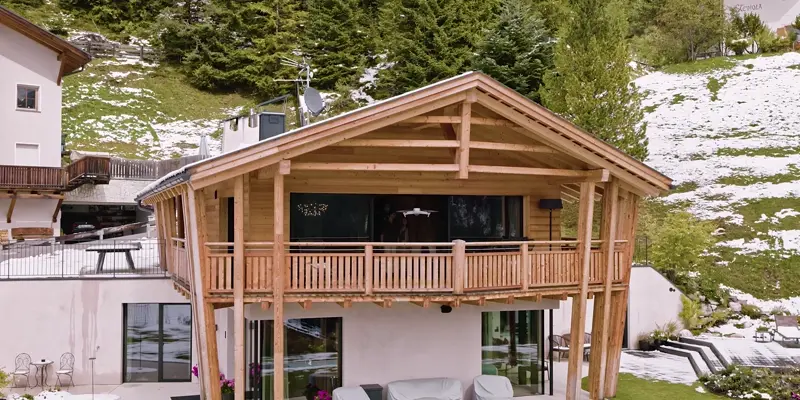
SkyDuo Pro's Vision Assist provides a downward view in addition to the front, back, left, and right views to help you better understand your surroundings.

SkyDuo Pro features ActiveTrack 360° to keep any subject optimally in frame. Based on the surrounding flight environment, it automatically plans a flight path and adjusts framing to ensure stronger shots that keep your subject the center of attention.
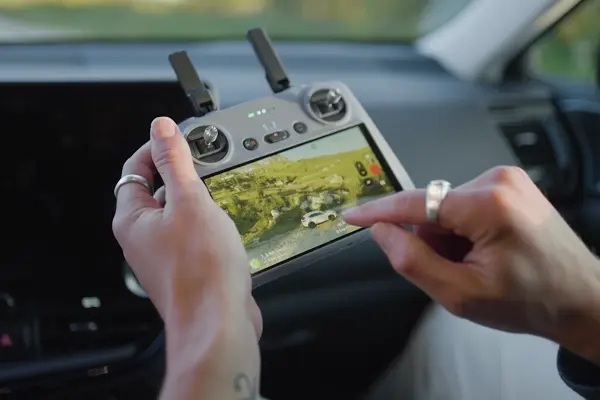
Once tracking begins, SkyDuo Pro can keep the subject in focus even if the lower half of their body is partially obscured by bushes or if they are standing on a bridge.
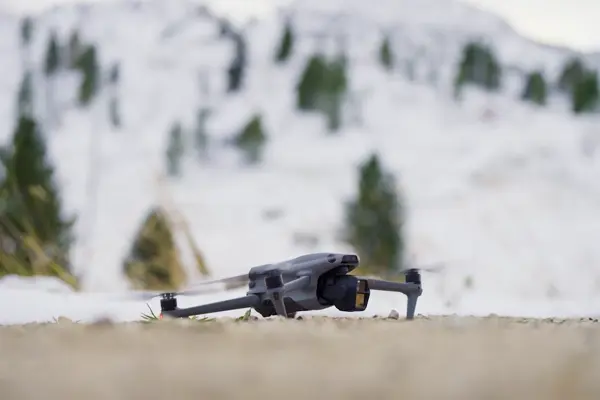
SkyDuo Pro introduces a new Subject Focusing feature that keeps your subject in sharp focus, even during manual flight or when the subject moves off-center. This feature allows you to fully concentrate on the more creative aspects of your shots like composition and camera movement.
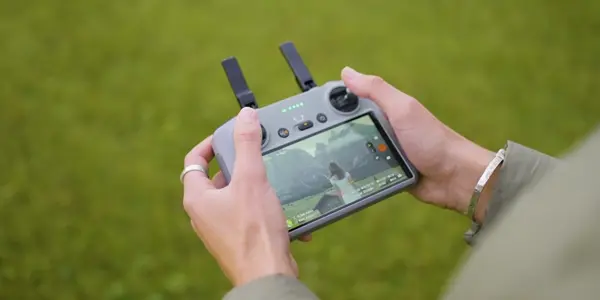
With up to 45 minutes of flight time, [3] SkyDuo Pro gives you enough time to scout locations, compose, nail your shots, and do it all over again and again.
Powered by SkyDuo Pro O4 FHD video transmission technology, Air 3S delivers 10-bit video transmission at 1080p/60fps over distances of up to 20 kilometers. [4] Live feeds are reliably smooth and vivid, with ultra-responsive control for an improved overall flight experience.

The SkyDuo Pro Cellular Dongle 2 [8] can be inserted directly into DJI Air 3S for seamless integration without the need for any extra accessories. In case of O4 signal obstruction or interference, you can rely on 4G connectivity for stable video transmission and drone control, enhancing flight safety and reducing disconnection risks.

